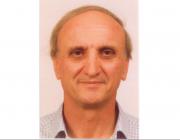Citation:
Abstract:
Joint hypermobility syndrome (JHS) is a heritable disorder of the connective tissue characterized by excessive joint movement, musculoskeletal pain and neurophysiological deficits (i.e. decreased proprioceptive acuity, altered neuromuscular reflexes). Such deficits may affect body balance thus increasing the risk of injury. The present study aimed at examining static and dynamic body balance following challenge of the visual and vestibular systems in individuals with JHS. The sample consisted of 21 females with JHS and 20 controls without signs of JHS. Static body balance was assessed by the degree of anteroposterior and mediolateral deviation of the center of pressure, during 20-sec single-leg stances with eyes opened (EO), eyes closed (EC) and eyes opened with head extension (EO-HE) using a foot pressure platform. Dynamic body balance was assessed by the number of landing and balance errors committed during a multiple single-leg-hop-stabilization test. Nonparametric analysis showed that the JHS-group demonstrated significantly greater (a) mediolateral deviation during single-leg-stance with EO (p < 0.01), (b) mediolateral and anteroposterior deviation during single-leg-stance with EO-HE (p < 0.05), and (c) number of landing errors (p < 0.05) compared to the control group. Poor static balance following challenge of the vestibular system may be justified by vestibular deficiency and/or insufficient proprioceptive capabilities of the neck. Impairments of dynamic balance in individuals with JHS may be attributed to proprioceptive deficits, which can alter feedforward and feedback mechanisms.

